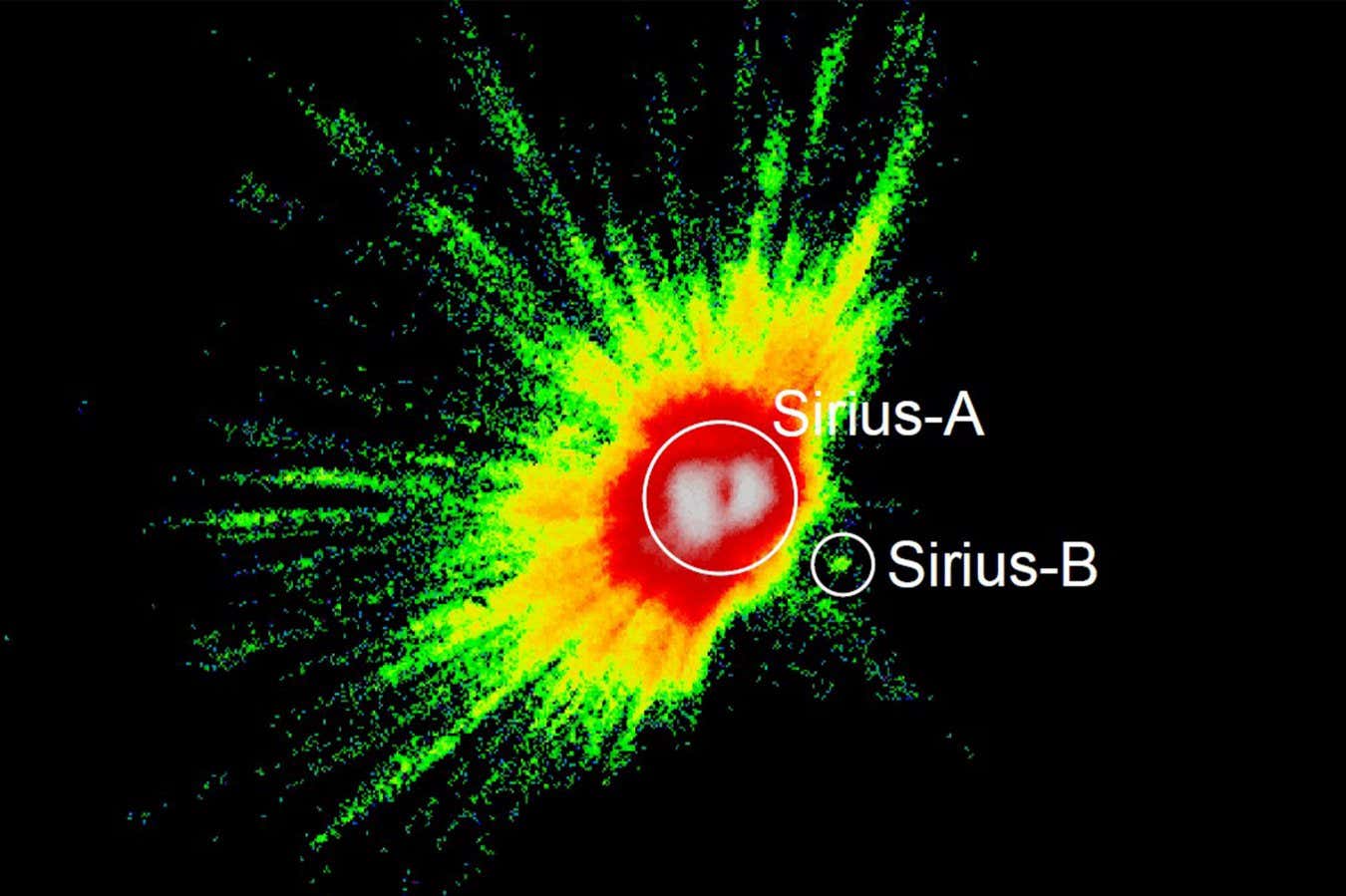Neuromorphic cameras, which only record data when a pixel’s brightness changes, may be advantageous for capturing extremely bright and dim objects in the same image and tracking fast-moving objects
By Matthew Sparkes
1 August 2025
The Sirius binary star system photographed with a neuromorphic camera
Satyapreet Singh, Chetan Singh Thakur, Nirupam Roy, Indian Institute of Science
Cameras that mimic human eyesight could have key advantages for astronomers, allowing them to capture extremely bright and dim objects in the same image and track fast-moving objects without motion blur.
Traditional digital cameras operate by sampling a grid of pixels many times a second, recording data from every pixel each time. Neuromorphic cameras, also known as event cameras, work very differently. Each pixel is only sampled if the brightness at that spot has changed; if a point on the sensor sees the same brightness as in the previous reading, then no new data is stored. This is similar to how sensory information is collected by the human eye.
Read more
Quantum computers teleport and store energy harvested from empty space
This approach has several benefits: it stores less data for the same video because only changing pixels are recorded, and it can operate at much higher frame rates. On top of this, they can capture extremely dim objects even if they are next to very bright objects that would saturate frames taken on a traditional camera, because the pixels detect photons in a logarithmic scale rather than a linear one.
To explore the potential of this technology for astronomy, Chetan Singh Thakur at the Indian Institute of Science, Bengaluru, and his colleagues installed a neuromorphic camera on a 1.3-metre-mirror telescope and a 20-centimetre-mirror telescope at the Aryabhatta Research Institute of Observational Sciences in Uttarakhand, India.
They were able to clearly capture meteorites passing between Earth and the moon, as well as an image of the Sirius binary system, which consists of Sirius A – the brightest star in the night sky – and Sirius B.
